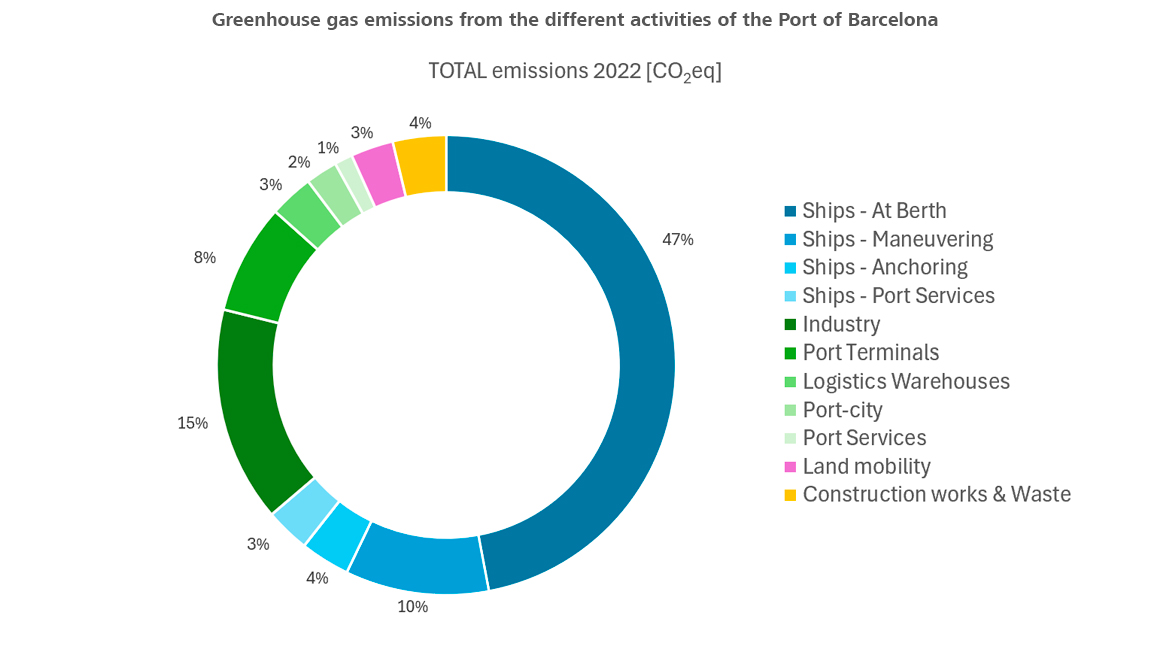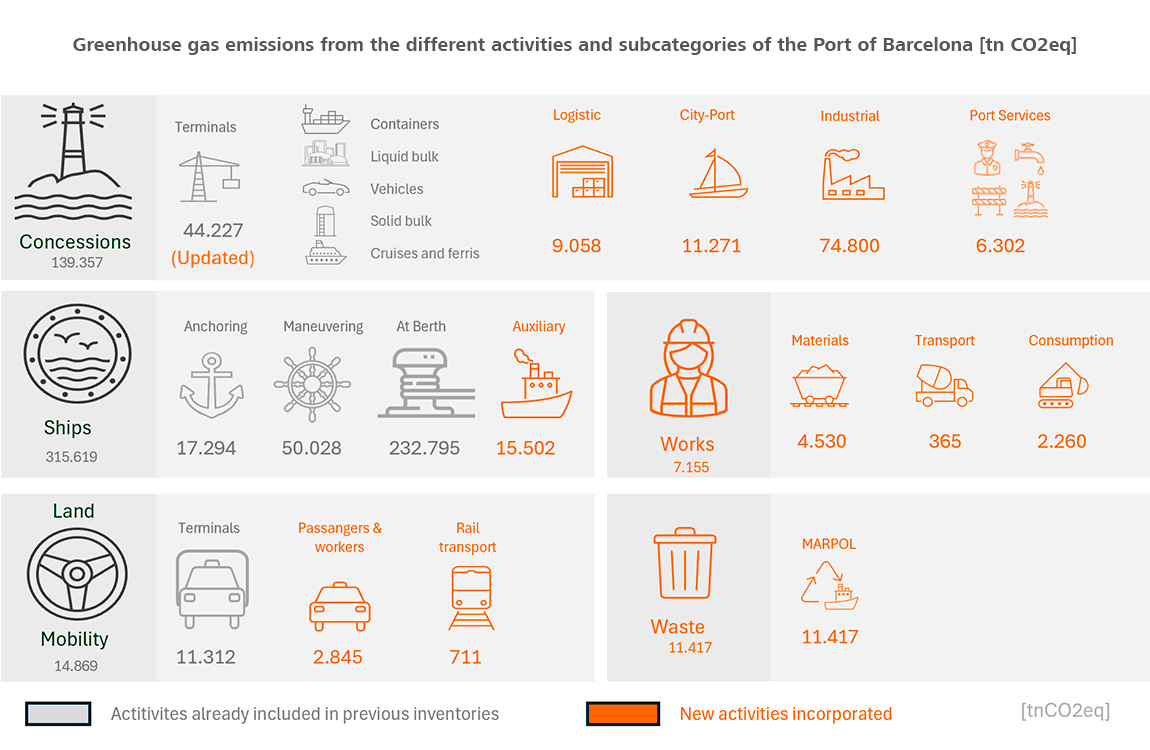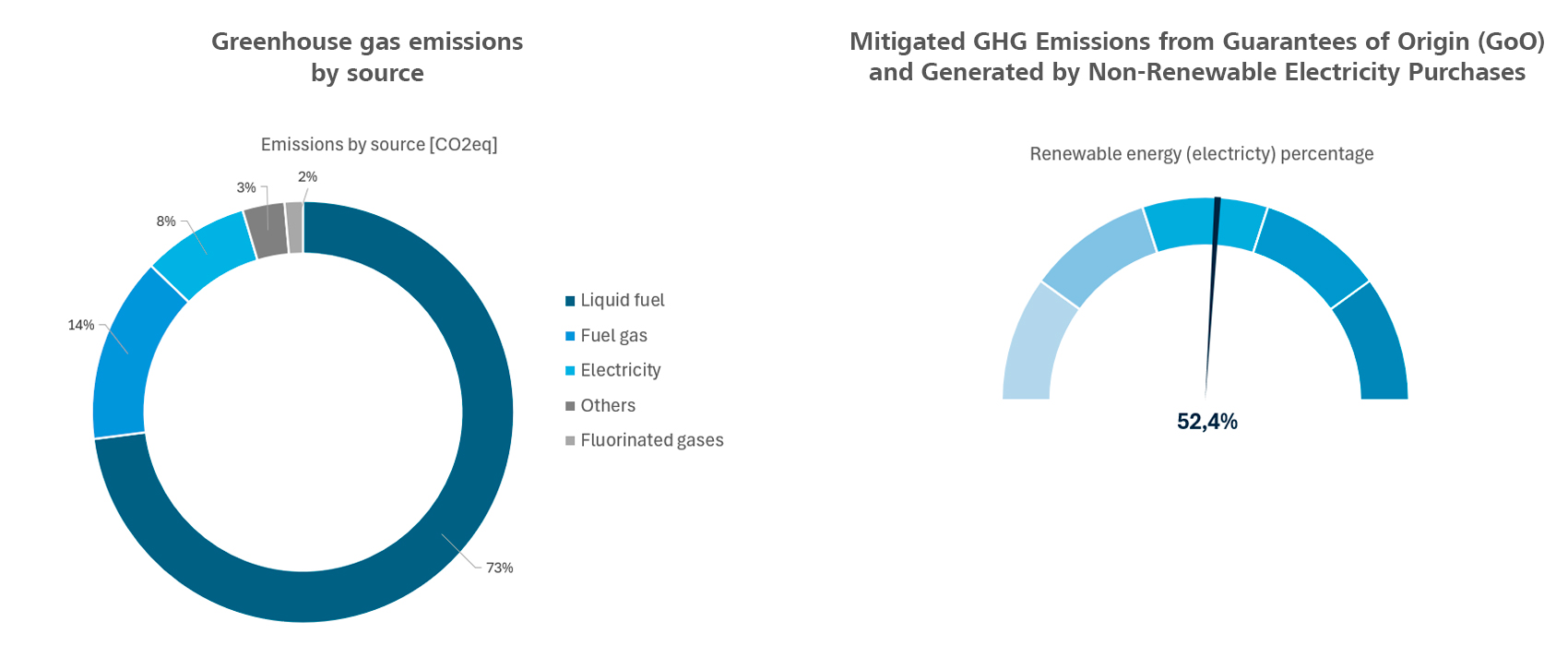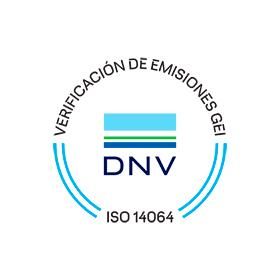The carbon footprint of the Port of Barcelona
The Port of Barcelona incorporates the activities that are carried out in port territory within scope 1 and 2. The calculation of the carbon footprint follows ISO 14.064 and is certified. It includes emissions from ships, land mobility, terminals and, in addition, it also incorporates industry and other concessions, port construction works and MARPOL waste.
Broader calculation
The Barcelona Port Authority (APB) is not starting its commitment to decarbonisation now, as since 2012 we have been reporting greenhouse gas (GHG) emissions through the Catalan Government's voluntary agreements programme, which only covers emissions from APB.
Currently, the GHG inventory that is evaluated includes the entire port community. The APB has expanded its scope to include the entire Port of Barcelona as the subject of the inventory, not just the APB itself, by internalizing emissions from port activities as direct emissions of the port (Land, Maritime I & Maritime II) and appropriately weighting emissions from vessels and terminals.
The participation of 65 concessions in the calculation of the carbon footprint has been crucial to obtain accurate and reliable data. The involvement of the port community shows that the energy transition is not just a technological issue, it is a collective task that requires a joint effort and a collective will to achieve a real transformation.

Carbon Footprint Categories
Specifically, greenhouse gas emissions from the following categories have been calculated:
- Ships: It is the main contributor, with 64% of emissions, it is made up of manoeuvres entering and leaving the port, staying at the docks and anchoring.
- Land mobility: It accounts for 3% and is derived from the approximately 10,000 daily entries of industrial trucks and tractors, as well as cars and trains that operate within the port.
- Port concessions and others: They contribute 29% of emissions and include terminals, logistics warehouses, industrial activities, port services and Port Vell concessions.
- Works and waste: They represent 4% of emissions and include the production and transport of construction materials and the consumption of machinery used in port works, as well as the management of MARPOL waste from ships calling at the port.


Details
The carbon footprint calculation for the Port of Barcelona has enabled detailed characterization of the most significant emissions source -vessels- and identification of other parameters such as the origin of emissions or the percentage of renewable electricity used.

A Collective Effort for a Sustainable Future
Calculating the carbon footprint annually requires a significant effort from the entire port community. This enables agility and transparency in decision-making and is a crucial tool for the development of the Port of Barcelona’s Energy Transition Plan. This plan outlines the roadmap for decarbonizing activities, defines strategies to position the Port of Barcelona as a hub for sustainable energies, and enhances its resilience, competitiveness, and attractiveness.


